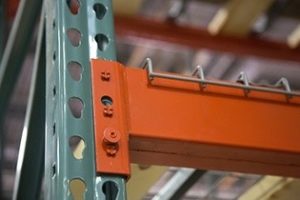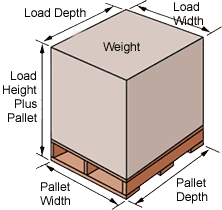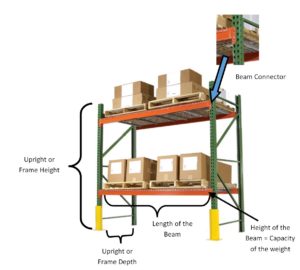If you manage a company that needs organized inventory storage space, you may have started shopping Google for a quick, simple pallet racking solution you could install and forget about. But if you live in Vancouver B.C., you’ll quickly realize how complicated this really is. Few pallet rack manufacturers can discuss your actual storage needs and local code requirements with you so that you get the right solution that will last and grow with you as your business grows.
Here at Hi-Cube Storage, our job is making sure our clients get the right storage solution that fits in the budget and complies with local building code requirements. As a distributor of shelving and racking products, we walk our clients through the following 6 steps to make sure they get exactly the solution that’s right for them:
1. Choose a Pallet Racking Distributor, Not a Manufacturer
A pallet racking distributor like Hi-Cube has storage consultants who get you access to a broader range of solutions than one manufacturer can provide. Our storage consultants ask questions so we understand your accessibility requirements, product shelf life, local building and seismic codes and more. And our storage consultants brainstorm together on each client’s storage challenges. The end result is the perfect pallet racking solution for your needs.
2. Installing New Pallet Racking or Adding to Existing Racks?
- If you are installing new pallet racks, we’ll need to know the dimensions and conditions of the storage space (warehouse) including soil reports and sprinklers system.
- If you are adding to existing pallet racking, we need to know the type of racking you already have so we can find a matching solution. To identify your current racking, ideally provide a picture of the rack, particularly the space where the upright meets the beam (see picture below):

3. What are You Storing?
It’s essential to know the following to get the right storage:
- If you pick product by hand, you need shelving. If you use a forklift, you need pallet racking. Learn more about the important differences between pallet racking and shelving in this blog
- How many pallets or boxes do you need to store? Are the boxes uniformly sized or do they differ?
Please use the picture below to determine the right measurements.

5. Know Your Building Codes for Pallet Racks in B.C.
Most cities in B.C. require building permits for shelving or pallet racking taller than 8 feet, and every city has fire, seismic and building codes to follow. If your pallet racking is taller, we will provide a system engineered to comply with local seismic/earthquake code requirements:
6. Know the Lingo
If you understand pallet racking terms, you’ll have a faster response when determining the type of pallet racking that’s best for you:
- Beam—A horizontal structural element that resists bending; know the height and depth if possible.
- Beam Locking Device or Beam Connector—A pin, bolt or other mechanism that secures the beam to the column.
- Upright or Frame—This structural assembly carries both vertical and horizontal loads to the floor. It usually consists of two columns and bracing members between the columns. The rack beams are attached to the frame columns and carry the loads to the columns; know the height and depth, if possible.
Pallet racks are an investment, so make sure you get the right solution the first time! Contact your Hi-Cube storage consultant to get started. We understand racking and will advise what is necessary to achieve your storage requirements.

